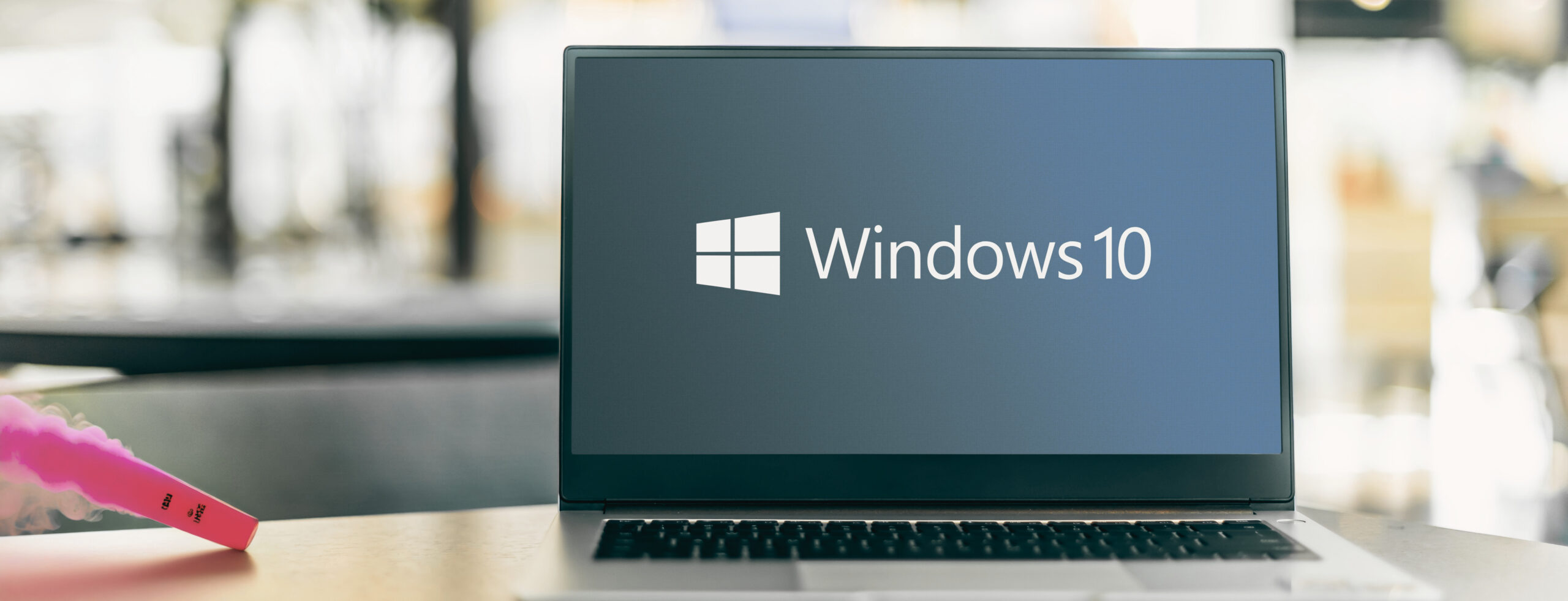Windows 10 Support Ends – How It Affects Businesses and What You Need to Do Now
Windows 10 Support Ends – How It Affects Businesses and What You Need to Do Now
In October 2025, Microsoft’s official support for Windows 10 will come to an end. This means the operating system – still used by millions of businesses worldwide – will no longer receive security updates, bug fixes, or technical support.
For many organizations, this marks both the end of an era and the beginning of a new phase. Systems that are not migrated in time risk becoming security liabilities – and the time to act is now.

A Predictable but Serious Risk
That Windows 10 has reached the end of its lifecycle comes as no surprise, but the consequences can be significant. Without new security updates, computers and servers still running Windows 10 will quickly become attractive targets for cyberattacks. Vulnerabilities that were once patched will be left open – and it’s only a matter of time before they’re exploited.
For organizations in sectors such as public services, healthcare, or finance, this is not just a technical concern but also a matter of compliance. A data breach or operational disruption can have far-reaching consequences – both financially and legally.
It’s important to remember that Windows 10 will continue to function after October 2025, but without the protection that updates provide. For companies that need more time, Microsoft offers an Extended Security Updates (ESU) program. Some users will have access to it for free, while others must subscribe to a paid plan. ESU can extend access to security updates for a limited time – but it should be seen as a temporary measure, not a long-term strategy.
How to Take Control of the Transition – Step by Step
- Map your entire IT environment
Start by identifying all computers, servers, and systems still running Windows 10. Document which ones are business-critical and need to be prioritized. Use tools such as Microsoft PC Health Check to determine which devices can handle Windows 11 and which need replacement. - Test applications and integrations
Ensure that all key systems and applications work properly in Windows 11. Older or custom-built solutions may need adjustments. Set up a test environment to verify functionality and performance before rolling out broadly. - Back up all business-critical data
Make sure important data is backed up and that recovery plans have been tested. If something goes wrong during the upgrade, you need to be able to restore quickly. - Create a clear migration plan
Build a project plan with a timeline, responsibilities, and budget.
If you haven’t started the transition yet, now is the time to act. Begin with pilot groups to test the process, gather feedback, and make adjustments before a full rollout. Tools such as Microsoft Intune or System Center can simplify management and improve control. - Engage and educate your users
Explain why the change is happening, how it will affect daily work, and what improvements Windows 11 brings. Short training sessions or internal briefings can reduce resistance and ensure a smoother transition. Early planning not only minimizes risks – it also improves user acceptance and operational stability. - Increase your security level during the upgrade
Windows 11 introduces several new security features. Enable BitLocker, Secure Boot, and modern antivirus solutions. Take the opportunity to review your monitoring, update, and incident response routines. - Evaluate the need for Extended Security Updates (ESU)
If your migration won’t be completed in time, ESU can serve as a temporary safety net. It buys you some time – but should not replace a proper upgrade.
Waiting Could Be Costly
Continuing to use Windows 10 after the end of support means increased risks of data breaches, downtime, and compliance violations. It can become expensive – in both money and reputation. In addition, finding expertise and support for outdated systems becomes harder over time.
A well-planned upgrade, on the other hand, is an investment. With modern systems and improved security, you gain better performance, stability, and happier users.
A Chance for Renewal
Leaving Windows 10 behind isn’t just about avoiding risk – it’s an opportunity for modernization. The transition can be the catalyst for reviewing your entire IT setup: cloud services, security, workflows, and automation.
Organizations that view this as a development project rather than a necessary burden will be better equipped for the demands of the future.
Conclusion: Act Now
Windows 10 support is officially coming to an end. For companies that have not yet migrated, it’s time to act – not in panic, but with focus and structure.
With the right planning, tools, and support, the transition can be both smooth and secure.
Need help planning, mapping, or executing your migration?
There are plenty of tools and services available today – from inventory and automated deployment to user training.
Our experts are ready to guide you every step of the way – from assessment to full implementation.

Get in touch!
Get in touch!
Choose your nearest office, looking forward to hear from you!
Region Norrköping/Linköping





































































